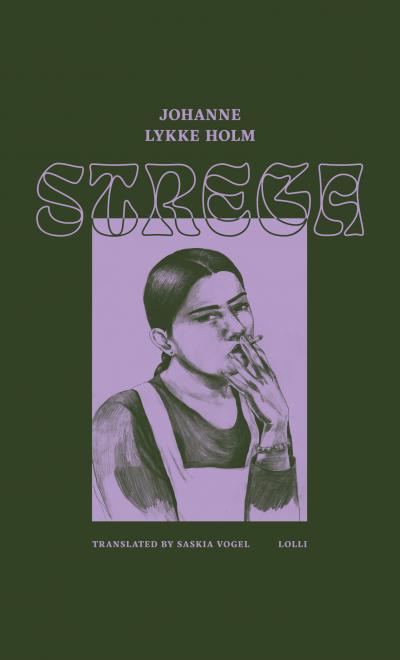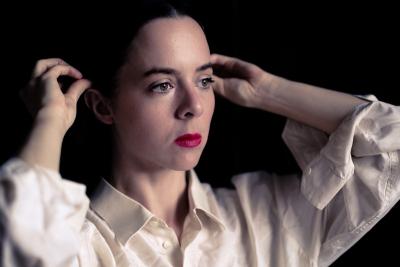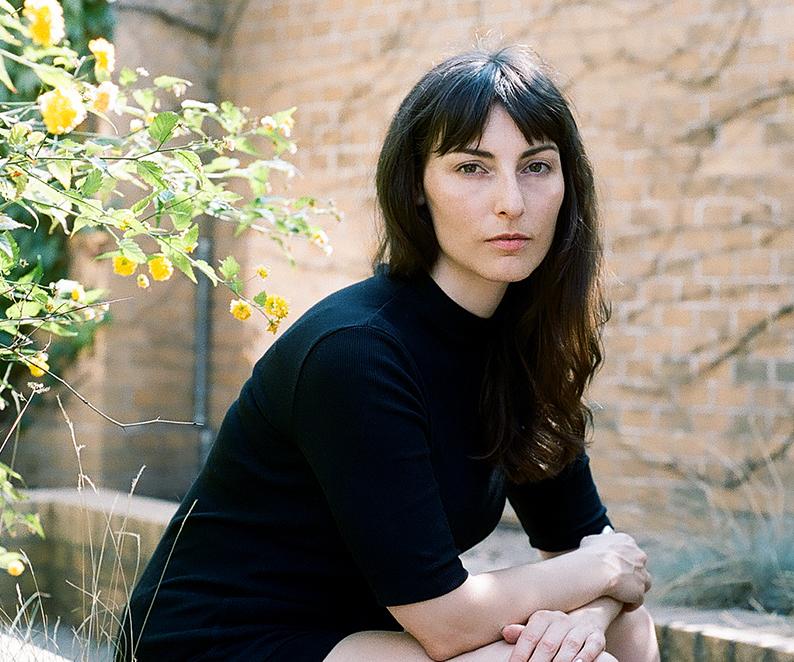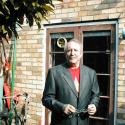Johanne Lykke Holm’s spellbinding novel Strega recounts one teen’s journey into womanhood. Leaving her parental home to work with eight other girls in a lavish but mouldering hotel, Rafa grapples with what it means to be a woman in a world literally and culturally saturated with gender-based violence.
Gothic and mythic in atmosphere, Strega is a novel that fights back, through occult and secular rituals, through a collective of young women who refuse to become dolls, and through its witchy love of things – an enchanted concatenation of lipsticks, liquorice, hairclips and jewellery. Grabbing you by the hair and heart, Strega will pull you backwards, witch-like in its grip: it’s a book that demands attention and takes a stand for “long dead maids and their shrouded knowledge”.
I had the pleasure of discussing the novel, its themes, allusions and witchy powers, with award-winning author and translator, Saskia Vogel, whose stunning English translation of Strega was recently published by Lolli Editions in the UK.
Hannah Hutchings-Georgiou: I read the gloriously insightful exchange you and fellow writer-translator Jen Calleja had during lockdown for Granta and thought your observation about how “translation felt like channelling, in the séance sense” chimed beautifully with Strega, both in terms of the process of translation and the novel’s pervading eerie, apparitional atmosphere. Could you talk more about how it “felt” to translate the novel?
Saskia Vogel: My method is like meditation. I’ve been taken by this idea that all I’m trying to do is create monastic conditions for myself. I need a counterbalance to that also, as I have a strong yearning to build community and take pleasure in doing so. But if I can spend my hours contemplating texts, really feeling them and sitting with them, then I think that’s the mark of a successful workday – and also a successful life. I just want to be able to sit with language. There’s almost nothing I love more than to really inhabit a text. I guess that’s where the channelling comes: just sitting and trying to process all those intangibles, how the text makes me feel, and how I, therefore, hope to translate that effect onto the reader.
One of the forever questions in translation is what is the feature of a language and what is particular to a writer’s individual style. With Strega, I took a big risk and did a literal translation. I decided to retain everything, because there is a vibrating strangeness to the simplicity of this language and something simmering under the whole book. When we were discussing the translation, the author Johanne said to me, “you have to let what is ugly be ugly, so that when something is beautiful it really comes through.” I need images and sensory information to root myself in a text, so I asked Johanne, “what kind of fabric would Strega be, if it was one?” She replied, “polyester.” As soon as she said that, I knew how to translate the novel. I understood how the language should feel, like polyester against one’s skin. That was the guiding light for me.
H H-G: I love that the author of Strega, Johanne Lykke Holm, translated your novel, Permission (Dialogue Books), into Swedish. There must be a lot of trust and mutual respect between you and Holm – a special kinship. What’s it like to work with someone who has translated your work?
SV: I asked my publisher if Johanne could translate my novel into Swedish, partly because I was thinking about her at various times when writing it. I felt a kinship there in a project that she and the writer Olga Ravn were doing; she was running a writing course called “The Witch School”, which looked at the voice of the witch as a way or position to question the patriarchy and bring agency to voices that may have been historically oppressed. The reading list was extraordinary: Hiromi Itō and others. In the space of witchcraft, I felt there was a kinship and I knew she’d understand those elements of Permission. It felt extraordinary to have the privilege of being translated by her.
 H H-G: Strega translates as “witch” in Italian and your superb translation of the novel certainly cast a spell on me as a reader. What I loved was the lack of clarity around who exactly the witches or witchy forces are in the novel – is it the three hoteliers? Is it the nuns, the nine young women? Or is the anarchic feminine energy coursing more broadly through the novel? Is it less about actual witches and more about a force, represented by Strega/Strega as a fictional place, a textual space and an object?
H H-G: Strega translates as “witch” in Italian and your superb translation of the novel certainly cast a spell on me as a reader. What I loved was the lack of clarity around who exactly the witches or witchy forces are in the novel – is it the three hoteliers? Is it the nuns, the nine young women? Or is the anarchic feminine energy coursing more broadly through the novel? Is it less about actual witches and more about a force, represented by Strega/Strega as a fictional place, a textual space and an object?
SV: Witchcraft comes out in the novel in terms of the girls and their rituals. The rituals you reach for in order to make sense of the world. The nuns have it, the hoteliers have it, and the girls have it all in different ways. Those different kinds of knowledge with the nuns, the games the girls play, this is all witchy/Strega. I guess the town, which is strange, is also part of this force. There’s something to be said if a title encompasses something of the novel or acts as an umbrella for it – after all, it’s called Strega and not The Great Red Hotel.
H H-G: Violence towards women is a topic that never leaves our headlines or changes – if anything, gendered violence is on the rise. In light of this, Strega’s claim that the “crime scene was not the bed but the body” feels strikingly pertinent. Did you feel this significance in Rafa’s statement and her descriptions (which are often laced with menace) of the activities involving the girls; in Cassie’s disappearance?
SV: We were editing the translation around the time in the UK when Sarah Everard was abducted and murdered by a policeman after walking home. She was really present in my mind when I was going through edits for Strega and reading through the text again.
There are these lists that Johanne makes of the young women who have died, the where and how. Cassie, who goes missing, becomes one of those girls, but with Sarah Everard fresh in my mind, when I read those lists, I just had to stop and sit with that feeling for a while, because the book is about this violence and how it is ever present, but it exists in such a mythic space – there’s a fable-like quality to it – so the reader can project.
In relation to how Johanne writes about the loss of Cassie with the artefacts (her trinkets left behind) and the searching, and the rhythm of the book in following the girls – which is all intuitive, natural, witchy and quirky – it’s a really beautiful way of representing loss. Again, ritual is what a person can reach for when there is nothing else and when there is no support from people in positions of power. Of course it’s also about things that are swept away. Like with Cassie, there’s unfinished business in terms of Sarah Everard. We’re never going to know the full story. Johanne Lykke Holm, author of Strega; © Fotograf
Johanne Lykke Holm, author of Strega; © Fotograf
H H-G: There isn’t anything quite like Strega; it’s unique in tone and style. Yet thematically and aesthetically it still conjures other literary and cinematic works. Anne Serre’s The Governesses, Joan Lindsay’s Picnic at Hanging Rock, Jeffrey Eugenides’ The Virgin Suicides (including the film adaptation by Sofia Coppola), Dario Argento’s Suspiria and all those works where a school of some kind tries to train and restrain teenage girls on the cusp of womanhood. Did you feel similar resonances when working on the translation?
SV: Both the old and new Suspiria definitely – though perhaps the new one is more on the nose for Strega because of how Luca Guadagnino fleshes the story out. Suspiria meets Melancholia – and Anna Biller’s The Love Witch. These references say a lot about the tradition it’s in; one that explores questions of institutions and the institution of femininity through these extraordinary settings and dark occult circumstances. That makes for part of the pleasure when you’re’ reading it, because it is so spare and it is so “itself”. The text reads like an incantation or enchantment; there’s something about the verb tenses that make you feel held in certain places.
H H-G: Could we stay with ideas of space and consider the hotel in the novel, which is not Stephen King’s The Overlook or Wes Anderson’s The Grand Budapest Hotel, and yet, like them, Strega’s The Olympic has its own enchanted stories to tell. What do you make of this place and its deliciously dark environs?
SV: The Olympic is a hotel but it’s also a relic with customs from times past. The tension and contrast Johanne sets up between the hoteliers and nuns is wonderful because the latter are rooted in the earth, plants and land; in something beyond time and history. They have their traditions which honour these spaces through the cultivation of gardens, making use of what’s there. But they’re also connected to the idea of healing and offer a different model of communion, companionship and being that is in stark contrast to life at the hotel. The convent is an alternate mode of being available to women in a patriarchy. The women must operate within certain terms and places. We have the nuns as a framework, the hoteliers/hotel as another, then also the village.
The Olympic is described as red: it’s lurid, almost like a brothel. There is some indecency to it. Then again, it is such an evocative space because of all these temporary rooms that aren’t really for anybody but those who can afford to access them. So a hotel room is by default a space of possibility, but it’s also different warrens and dens for the girls to explore and inhabit. The girls grasp at the mysteries of the world through the clues left behind there. So much of the novel is about how the girls occupy the hotel, what they repurpose and reuse, and where they are together in this liminal state of girlhood/womanhood and education/service.
- Strega by Johanne Lykke Holm, translated by Saskia Vogel (Lolli Editions, £14.99)
- More book reviews on theartsdesk















Add comment